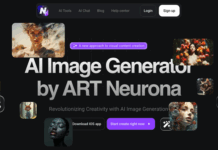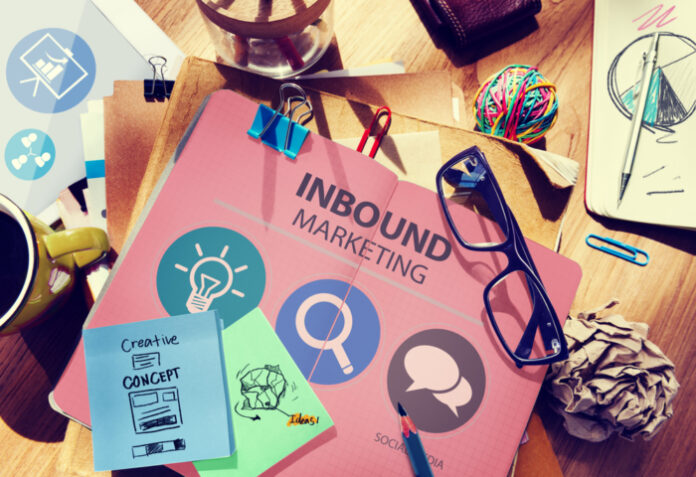A business will not survive without customers. As a business, your ability to get customers and provide a product or service to them, for profit, is everything. Acquiring customers through advertising is a popular approach, but it can get very expensive. There may come a time when you need to consider investing funds in other types of marketing that have longer-term success. One of those approaches you can consider is inbound marketing.
Throughout this article, we will explore what inbound marketing is and what its five core fundamentals are. By the end of this article, you will have a clear understanding of what inbound marketing is and be in a position to decide whether it is something you should consider implementing in your business.
What Is Inbound Marketing?
Inbound marketing helps businesses change how they reach potential buyers through advertising ― focusing on creating valuable client experiences. It is strategic, follows five core fundamentals, has many benefits, and has gained popularity over outbound marketing. Outbound marketing is traditional marketing that puts messages out to the masses with the aim and hopes it resonates with the audience. It advertises to a huge range of people, and it is hard to miss a potential client.
Inbound marketing reduces expenses by more focused advertising to a specific target audience. It is cost-effective and better when it comes to returns on investment compared to outbound marketing. Inbound marketing simplifies sales and marketing work. It is strategic and sustainable for an extended period. Moreover, it can be managed on one platform, such as CRM software.
Another benefit of inbound marketing is that it increases brand visibility and awareness. Educating the audience in inbound marketing increases the confidence and credibility of a product. One of its main advantages is generating relevant leads. Furthermore, it improves the relationship with customers through increased interactions. Therefore, the five core fundamentals of inbound marketing help make advertising more effective and beneficial to businesses.
Vectis Marketing can assist you with inbound marketing if you are looking for an experienced and results-driven marketing partner.
Buyers Persona
The buyer’s persona is the semi-fictional representation of the ideal potential buyer. This is based on real data and speculation from demographics, usually achieved through surveys and reviews, behavior, motivation, and goals. The buyer’s persona is fundamental in inbound marketing. It is not only the age, social status, and gender of a single customer but the inclusion of many potential buyers and still striking a focus on everyone’s needs. By understanding a buyer’s persona, one can create a product that solves the potential customer’s problems.
For instance, when it comes to online content creation, it is essential to personalize while advertising a product. Understanding the buyers’ persona by accessing their motivations and needs will help create branding that captures their attention. When buyers relate to the product, they will likely purchase it.
Goals
Goal setting is one of the key starting points of inbound marketing. With goal setting, one can focus on creating more qualified leads that will eventually increase the return on the investment done in marketing. Goals help in tracking progress and ensuring that different teams push for a specific product work in collaboration and are well aligned.
Inbound marketing focuses on setting S.M.A.R.T goals. S stands for Specific, meaning one must be precise about what one aims for. M for measurable shows the progress. A stands for attainable, where goals should be broken down into small, achievable steps. R stands for relevant. Inbound marketing aims to set reasonable goals related to a product and push for more sales. T for time-bound means that the goals sets have to be achieved within a specific time. By keeping track of the goals set, inbound marketing contributes to the growth of a business.
Buyer’s Journey
A buyer’s journey involves three stages:
- The awareness stage: In this stage, the customer realizes they have a problem. With inbound marketing, the marketer should be able to identify the customer’s problem and look at how their product can solve that problem.
- The consideration stage: The customer will then move into the consideration stage, seeking the best solution. The marketer should have a good offer for the customer at this point.
- The decision stage: In this stage, the buyer has compiled a list of products that may help solve his or her problem. The customer will choose the marketer with the best communication and guidance. Inbound marketing focuses on understanding the buyer’s journey and creating a product or content that aligns with his or her needs.
The buyer’s journey is vital in inbound marketing since it helps guide and expand each marketing step by having the buyer’s journey in mind. Understanding the three stages creates the best content that meets the buyer’s specific needs.
Content Creation
One of the critical components of inbound marketing that keeps customers interested is valuable content creation. Inbound marketing aims to create content that keeps attracting strangers and retaining followers that eventually will make more product sales. The best way to create valuable content is by incorporating the buyer’s persona and journey, eventually leading to relevant content that targets his or her needs. Content should be made in terms of topic clusters and pillar pages.
Content is used in various ways, such as videos, blog posts, checklists, eBooks, and emails, to help achieve marketing goals. There are many benefits of content in inbound marketing to a business. Content creation helps to increase search engine visibility together with SEO strategies. It also builds trust and nurtures leads through emails and blogs that provide relevant information. Content increases engagement on social media, which eventually converts leads to sales. In content creation delivery, voice and tone are crucial elements that should be particular to the target audience for effective marketing.
Contacts
A well-detailed contact database is an essential aspect of fundamental inbound marketing. It aids in identifying the target market and the customers’ interests in the business. Every person who engages with a business is considered a contact, and his or her information should be stored well in customer relationship management (CRM) software. Contacts are the people with which a business should provide value and build relationships. Inbound marketing emphasizes the importance of investing in a robust CRM, as it fuels many leads and improves the timing and frequency of follow-up. It also helps in shortening the sales cycle.
Contact databases should have different segments that aim at specific marketing goals of a business. Different content should be sent to each segment to avoid flooding of information, especially to current clients, that is ideal for prospective clients. Interacting with a contact strengthens the brand’s presence in a community, keeping it relevant and eventually leading to more sales.
Is Inbound Marketing Suitable for My Business?
Let us put it this way: Would you like customers to call you ready to do business, with you specifically marketing to them? If the answer is yes, then inbound marketing is suitable for your business.
It does not necessarily mean you should only focus on inbound marketing, but it should be a part of your overall marketing strategy.
Summary
These inbound marketing fundamentals are just the very beginning of what inbound marketing is, and what it can do for your business.
Every business plan should include a consideration of inbound marketing and a dedication to budgeting a portion of the overall marketing spend to inbound marketing given its high return on investment.
Find a Home-Based Business to Start-Up >>> Hundreds of Business Listings.














































